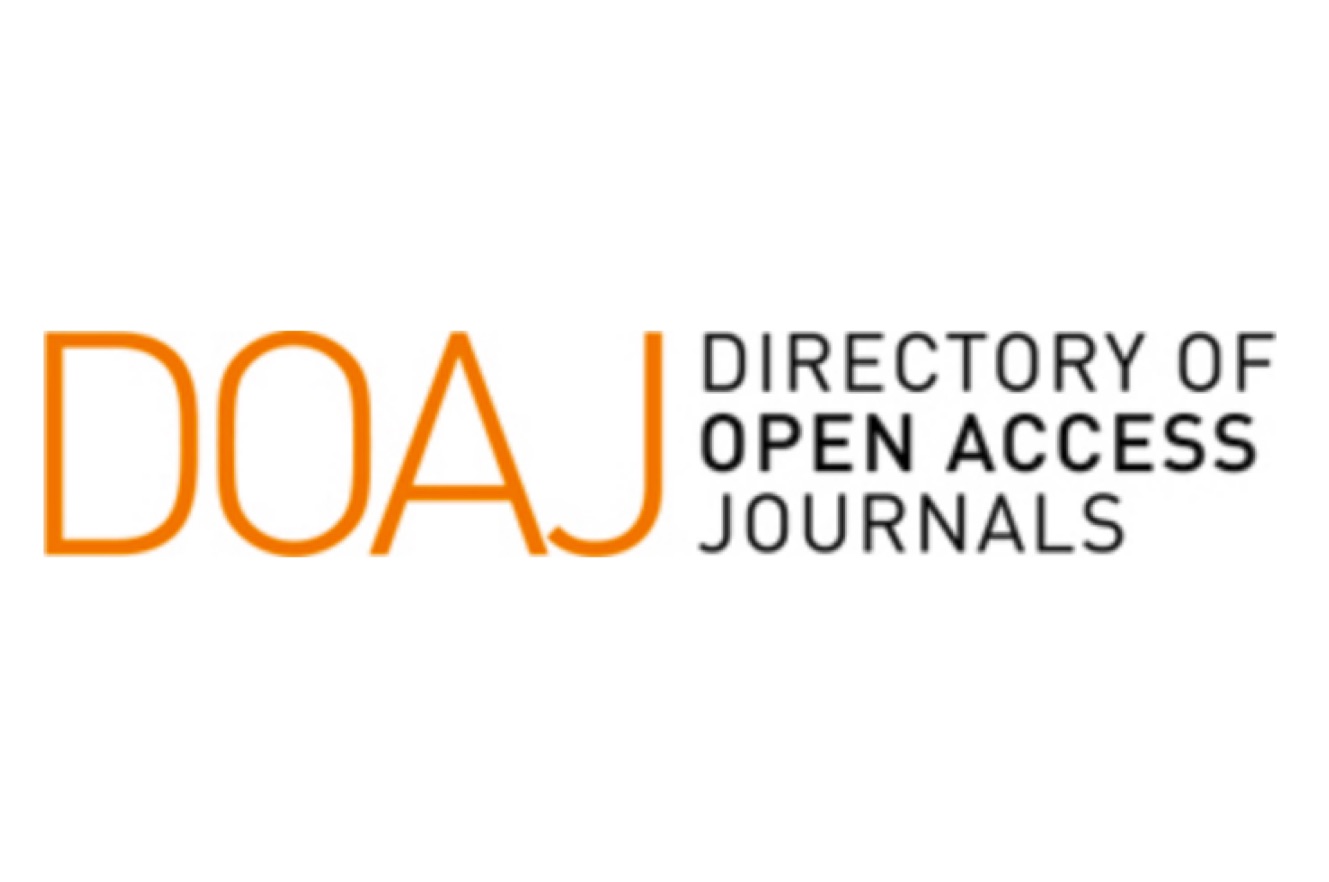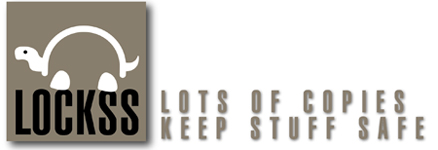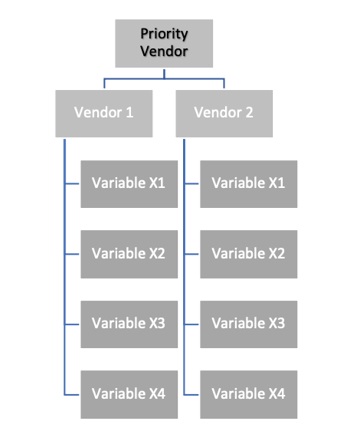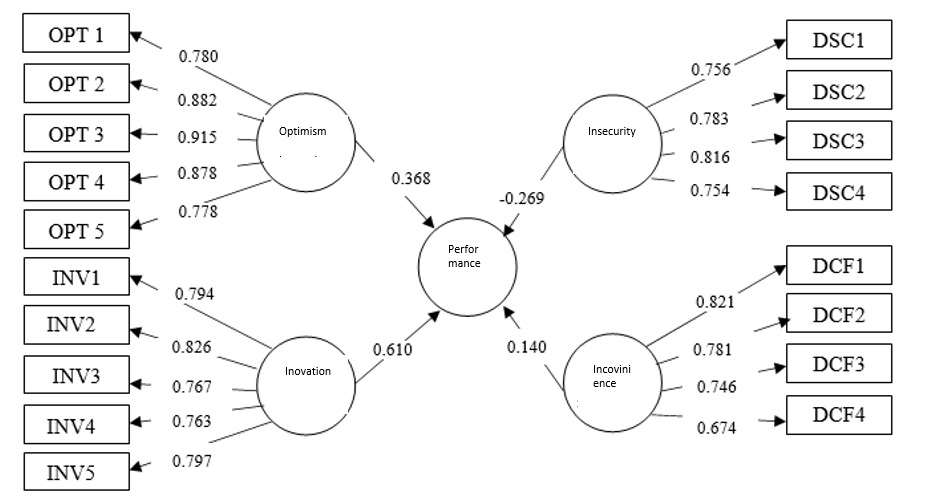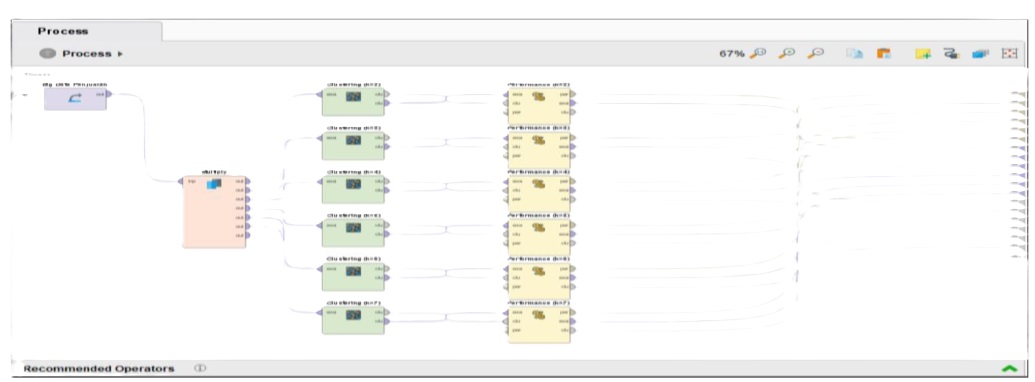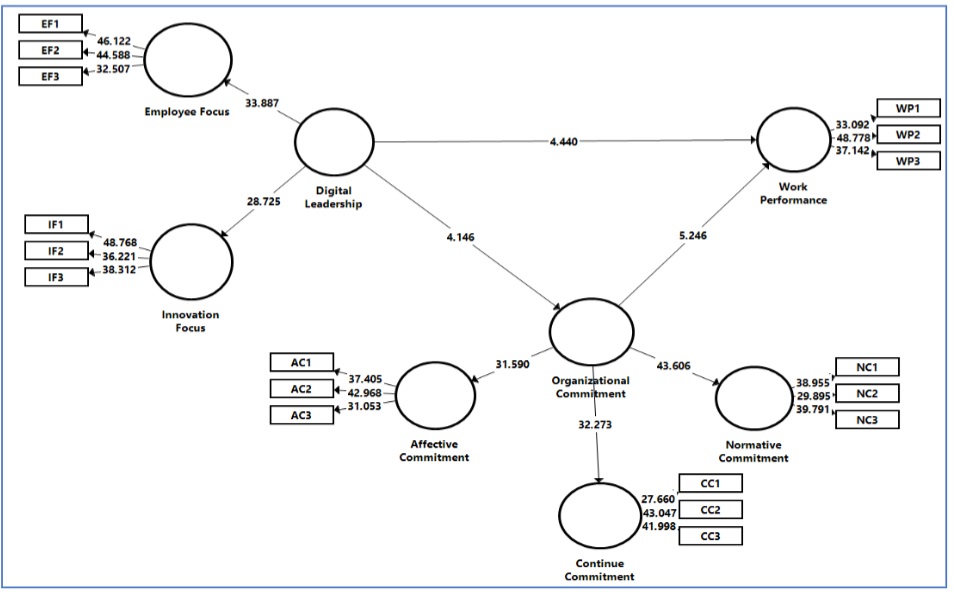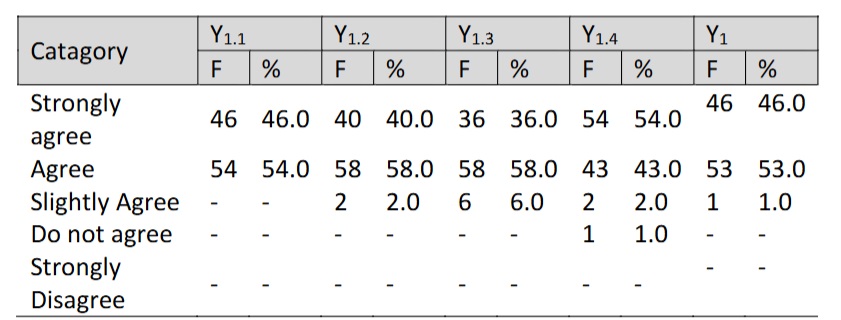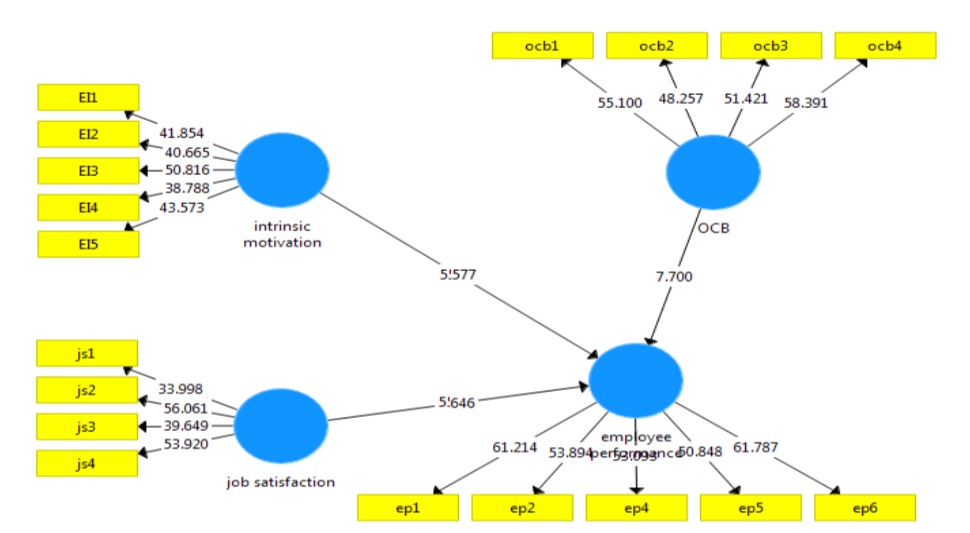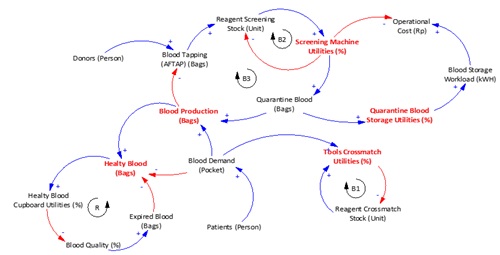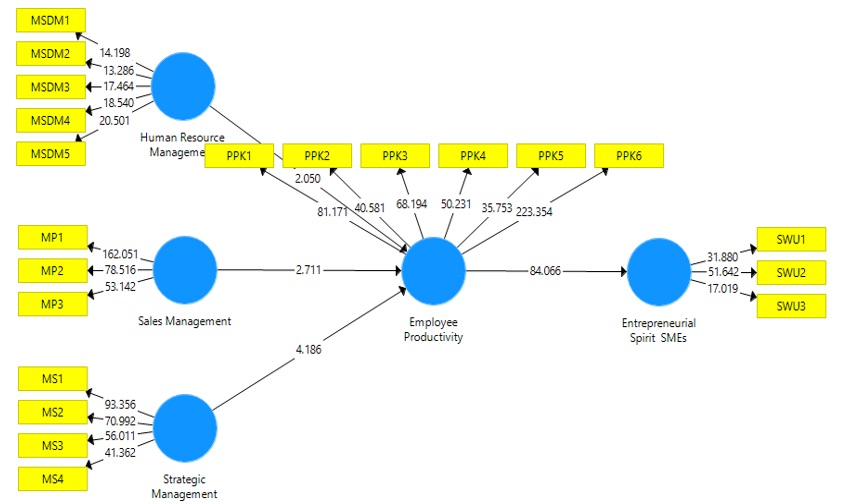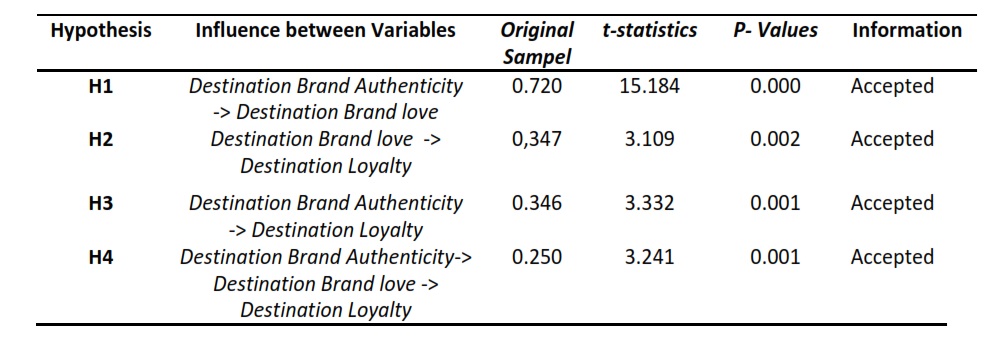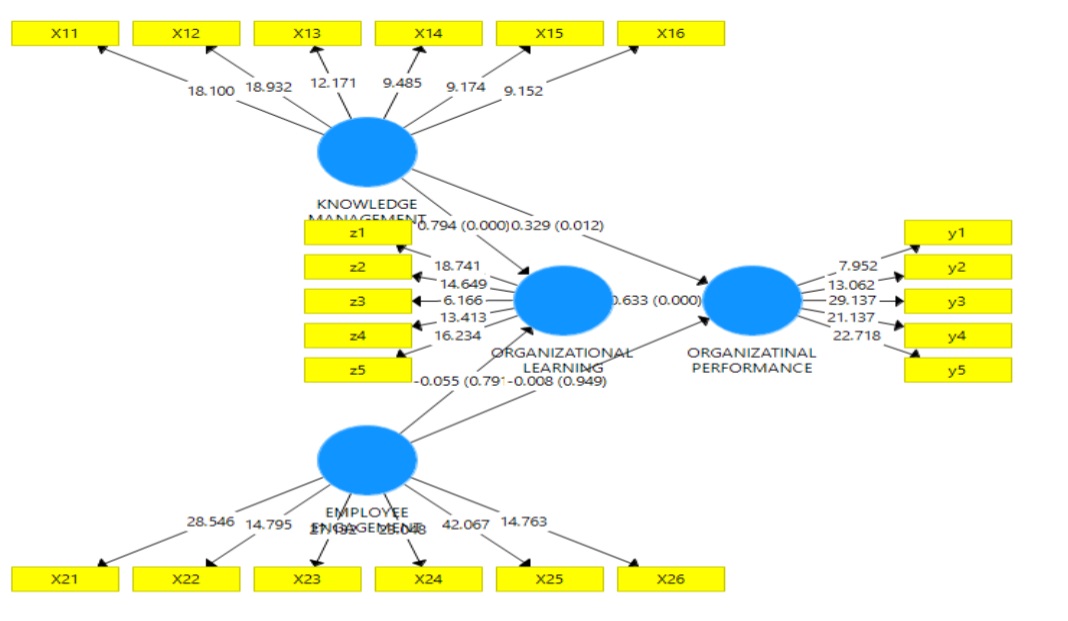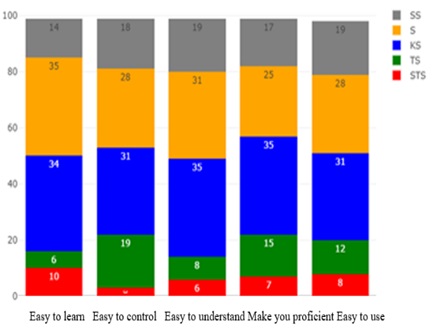IMPLEMENTASI CONSIGNMENT STOCK DAN MARKETING MIX STRATEGY 4P UNTUK MENURUNKAN PERSEDIAAN PADA PART AND SERVICE DEPARTMENT DI PT. COAL MINING
Downloads
Abstract
The company has complaints about the high inventory which is a burden to the company. Based on the observations, the inventory level in the Part and Service department in July with a value of days on inventory of 149 days exceeded the maximum target of 120 days. This study aims to find a way to reduce the value of days on inventory and deadstock as much as possible so that it can reduce costs. To find a solution to the problem, an ABC, SWOT, and business solution analysis was carried out through focus group discussions (FGD) with seniors and experts on this issue. From all the results of the analysis it was agreed that the consignment stock method and the 4P mix strategy could be implemented. After implementing this idea, good results were obtained, namely a decrease in inventory of Rp. 37,347,572,356 to Rp. 27,650,733,680 (down 26%) and the value of days on inventory from 149 days to 98 days and also a decrease in deadstock from Rp. 11,641,000,000 to Rp. 8,626,000,000 (down 26%)
Abstrak
Perusahaan memiliki keluhan akan tingginya inventory (inventory) yang menjadi beban bagi perusahaan. Berdasarkan hasil observasi, tingkat inventory pada DePartemen Part and Service pada bulan Juli 2018 ditemukan nilai days on inventory sebesar 149 hari yang mana telah melebihi batas maksimum yaitu 120 hari. Penelitian ini bertujuan untuk menemukan cara agar nilai days on inventory dan deadstock dapat ditekan semaksimal mungkin sehingga dapat menekan cost. Untuk mencari solusi permasalahan dilakukan analisis ABC, SWOT, dan solusi bisnis melalui focus group discussion (FGD) dengan para senior dan ahli dalam masalah ini. Dari seluruh hasil analisis disepakati bahwa metode consignment stock dan mix strategy 4P lah yang dapat diimplementasikan. Setelah implementasi ide tersebut, didapatkan hasil yang baik yakni penurunan inventory Rp 37.347.572.356 menjadi Rp 27.650.733.680 (turun 26%) serta nilai days on inventory dari 149 hari menjadi 98 hari dan juga penurunan atas deadstock dari Rp 11.641.000.000 menjadi Rp 8.626.000.000 (turun 26%).
Downloads
S. Axsäter, Inventory Control, vol. 225. Cham: Springer International Publishing, 2015. doi: 10.1007/978-3-319-15729-0.
H. H. Azwir and O. Patriani, "Perbaikan Pengelolaan Pergudangan Melalui Penerapan Sistem Informasi Pergudangan di CV. ABB,” J. OPTIMASI Sist. Ind., vol. 16, no. 01, p. 15, 2017.
S. T. Risyahadi (Universitas IPB - Indonesia) and H. Y. Putri (Universitas IPB - Indonesia), "Upaya Improvement Pengendalian Persediaan Suku Cadang Dengan Metode Fixed Time Period Pada PT XYZ,” J. Manaj. Ind. Dan Logist., vol. 3, no. 2, pp. 129–140, Nov. 2019, doi: 10.30988/jmil.v3i2.122.
M. Fauzi (Universitas Widyatama - Indonesia) and S. N. Bahagia (Institut Teknologi Bandung - Indonesia), "Analisis Kebijakan Inventori Pada Komponen Darah Packed Red Cell (PRC),” J. Manaj. Ind. Dan Logist., vol. 3, no. 2, pp. 94–105, Nov. 2019, doi: 10.30988/jmil.v3i2.218.
W. Adiani, D. Lesmono, and T. Limansyah, "Model Persediaan dengan Permintaan Bergantung pada Harga Jual dan Tingkat Persediaan dengan Faktor Deteriorasi,” J. Ilm. Tek. Ind., vol. 18, no. 2, pp. 183–191, Dec. 2019, doi: 10.23917/jiti.v18i2.8749.
R. V. Martono, "Studi Kasus Penerapan Vendor Managed Inventory Pada Sistem Rantai Pasok,” vol. 02, no. 01, p. 12, 2018.
E. Fatma and D. S. Pulungan, "Analisis Pengendalian Persediaan Menggunakan Metode Probabilistik dengan Kebijakan Backorder dan Lost sales,” J. Tek. Ind., vol. 19, no. 1, p. 38, Feb. 2018, doi: 10.22219/JTIUMM.Vol19.No1.38-48.
H. F. Afianti, H. H. Azwir, J. K. H. Dewantara, and K. Jababeka, "Pengendalian Persediaan Dan Penjadwalan Pasokan Bahan Baku Impor Dengan Metode Abc Analysis Di PT Unilever Indonesia, Cikarang, Jawa Barat,” vol. 21, no. 2, p. 14, 2017.
I. Masudin and M. S. Kamara, "Electronic Data Interchange and Demand Forecasting Implications on Supply Chain Management Collaboration: A Customer Service Perspective,” J. Tek. Ind., vol. 18, no. 2, p. 138, Sep. 2017, doi: 10.22219/JTIUMM.Vol18.No2.138-148.
D. P. Hasian, "Konsep Persediaan Minimum Maksimum Pengendalian Part Alat Berat Tambang PT Semen Padang,” J. Optimasi Sist. Ind., vol. 11, no. 1, p. 203, May 2016, doi: 10.25077/josi.v11.n1.p203-207.2012.
W. A. Jauhari, "Tingkat Persediaan Spare Part Forklift Merek Komatsu Dengan Pendekatan Model Persediaan Single Item,” J. Ilm. Tek. Ind., vol. 4, no. 3, p. 10, 2006.
T. Wild, Best practice in inventory management, 2. ed. Amsterdam: Butterworth-Heinemann, 2002.
E. Constantinides, "The Marketing Mix Revisited: Towards the 21st Century Marketing,” J. Mark. Manag., vol. 22, no. 3–4, pp. 407–438, Apr. 2006, doi: 10.1362/026725706776861190.
M. Braglia and L. Zavanella, "Modelling an industrial strategy for inventory management in supply chains: The ‘Consignment Stock' case,” Int. J. Prod. Res., vol. 41, no. 16, pp. 3793–3808, Jan. 2003, doi: 10.1080/0020754031000138330.
G. Valentini and L. Zavanella, "The consignment stock of inventories: industrial case and performance analysis,” Int. J. Prod. Econ., vol. 81–82, pp. 215–224, Jan. 2003, doi: 10.1016/S0925-5273(02)00300-6.
L. Zavanella and S. Zanoni, "A one-vendor multi-buyer integrated production-inventory model: The ‘Consignment Stock' case,” Int. J. Prod. Econ., vol. 118, no. 1, pp. 225–232, Mar. 2009, doi: 10.1016/j.ijpe.2008.08.044.
M. Catena, A. Grassi, and A. Persona, "The Consignment Stock of Inventories in Presence of Obsolescence,” Int. J. Prod. Res., vol. 43, no. 23, pp. 4969–4988, 2005, doi: https://doi.org/10.1080/00207540500216631.
M. A. Barsalou, Root Cause Analysis: A Step-By-Step Guide to Using the Right Tool at the Right Time. Boca Raton, FL 33487-2742: CRC Press, 2015.
E. GüRel, "SWOT ANALYSIS: A THEORETICAL REVIEW,” J. Int. Soc. Res., vol. 10, no. 51, pp. 994–1006, Aug. 2017, doi: 10.17719/jisr.2017.1832.
N. Altay and L. A. Litteral, Eds., Service Parts Management. London: Springer London, 2011. doi: 10.1007/978-0-85729-039-7.
JMIL Jurnal Manajemen Industri dan Logistik (Journal of Industrial and Logistics Management) is an Open Access Journal. The authors who publish the manuscript in JMIL Jurnal Manajemen Industri dan Logistik agree to the following terms:

JMIL Jurnal Manajemen Industri dan Logistik is licensed under a Creative Commons Attribution 4.0 International License. This permits anyone to copy, redistribute, remix, transmit and adapt the work provided the original work and source is appropriately cited.
This means:
(1) Under the CC-BY license, authors retain ownership of the copyright for their article, but authors grant others permission to use the content of publications in JMIL Jurnal Manajemen Industri dan Logistik in whole or in part provided that the original work is properly cited. Users (redistributors) of JMIL Jurnal Manajemen Industri dan Logistik are required to cite the original source, including the author's names, JMIL Jurnal Manajemen Industri dan Logistik as the initial source of publication, year of publication, volume number, issue, and Digital Object Identifier (DOI); (2) Authors grant JMIL Jurnal Manajemen Industri dan Logistik the right of first publication. Although authors remain the copyright owner.















